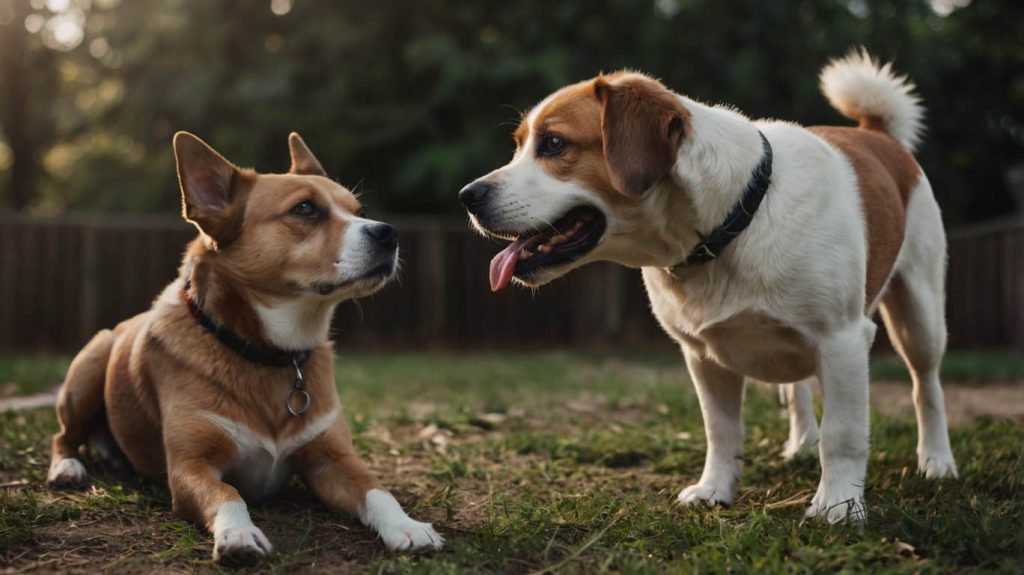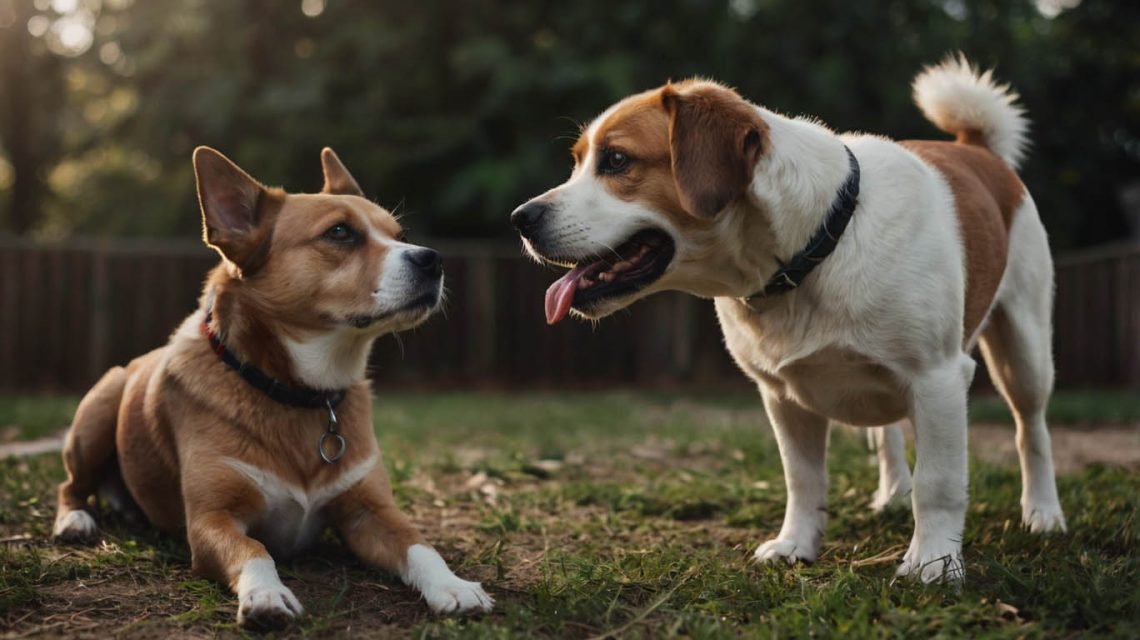Does your dog lunge, bark, or pull every time another dog passes by? Whether it’s excitement or reactivity, learning how to teach dog to ignore other dogs is one of the most valuable skills you can develop. Not only does it make walks more peaceful, but it also boosts your dog’s focus and strengthens your bond.
In this in-depth guide, we’ll explore the reasons behind dog-to-dog reactions, real stories from dog owners, and simple, actionable training methods that actually work.
Why It’s Important to Teach Dogs to Ignore Others
While social dogs are fun, constant reactions to other dogs can become stressful. Here’s why learning how to teach dog to ignore other dogs is essential:
- Reduces leash pulling and lunging
- Minimizes reactivity and anxiety
- Improves focus during walks or training
- Ensures safer outings in public areas
- Strengthens obedience and impulse control
Not every dog needs to greet every pup they see—and not all other dogs want to be greeted. So, a neutral, calm response is ideal.

Story of Bruno: From Reactive to Relaxed
Bruno, a 4-year-old German Shepherd, used to bark uncontrollably at every dog he saw. His owner, Alicia, avoided parks, walking trails, and even friends’ homes.
Frustrated but hopeful, she began using counter-conditioning, teaching Bruno to look at her every time a dog appeared. With treats, distance control, and calm encouragement, Bruno began ignoring other dogs altogether.
Now, Alicia and Bruno enjoy peaceful walks and even stroll through dog-filled areas with confidence. Her journey highlights that how to teach dog to ignore other dogs is 100% possible—with patience and the right approach.
Understanding Why Dogs React to Other Dogs
To stop the reaction, we must understand what causes it. Dogs usually focus on others due to:
- Overexcitement or social frustration
- Fear or past trauma
- Protective instincts
- Lack of training and boundaries
Some dogs bark to play; others bark to defend. Knowing why your dog reacts helps tailor how to teach dog to ignore other dogs effectively.
How to Teach Dog to Ignore Other Dogs Step-by-Step
Let’s get into actionable strategies you can start today.
Step One: Build Focus with “Look at Me” Command
This command shifts your dog’s attention from distractions to you.
- Start indoors with no distractions.
- Hold a treat near your eye and say, “Look at me.”
- Reward every time your dog makes eye contact.
Once this is reliable, practice outside with minimal distractions, slowly increasing intensity. This foundational skill is crucial for how to teach dog to ignore other dogs.
Step Two: Create Distance from Other Dogs
Distance = safety. Begin at a far enough distance where your dog notices but doesn’t react. This is called the threshold.
- Walk parallel to other dogs at a distance.
- Mark calm behavior with praise and treats.
- Slowly decrease distance over time.
By staying below your dog’s reactivity threshold, you can practice calm behavior without triggering stress.
Step Three: Use High-Value Treats for Redirection
The right reward keeps your dog focused.
- Use real chicken, cheese, or a favorite toy.
- Reward your dog when they choose to ignore or look at you.
- Be generous during early sessions.
With consistent rewards, your dog learns that staying calm near other dogs brings better benefits than reacting.
What If Your Dog Is Already Barking or Lunging?
Don’t worry—it’s still fixable. When reactivity kicks in:
- Increase distance immediately
- Stay calm (don’t yell or pull the leash)
- Use the “Let’s go” cue and move in the opposite direction
Over time, your dog learns that reacting doesn’t lead to anything rewarding. This step is vital in mastering how to teach dog to ignore other dogs during unexpected encounters.

How to Teach Dog to Ignore Other Dogs Using Counter-Conditioning
Counter-conditioning changes your dog’s emotional response. Here’s how:
- Let your dog see another dog at a distance.
- As soon as they notice the other dog, offer treats before they react.
- Repeat until the sight of a dog triggers looking at you instead.
You’re rewiring your dog’s brain to associate other dogs with something positive.
Common Mistakes to Avoid in Dog Social Training
To ensure success, steer clear of these errors:
- Allowing on-leash greetings too often (it builds excitement)
- Punishing barking or pulling without redirection
- Using low-value treats in high-stress settings
- Getting too close too fast
Instead, slow and steady wins the race. When done right, how to teach dog to ignore other dogs becomes smoother with each session.
Helpful Tools for Teaching Dog-to-Dog Focus
Here are some training tools that make a big difference:
- Head collars (like the Gentle Leader) for better control
- Treat pouch for quick rewards
- Long leash for distance work in open spaces
- Clicker to mark calm behavior precisely
Using these tools makes training more manageable and consistent.
Case Study: Luna the Rescue Learns to Stay Calm
Luna, a 2-year-old rescue mix, had zero leash manners. Every walk ended in stress. After a behaviorist suggested LAT (Look At That) training, her owner began structured 10-minute daily sessions.
Over three weeks, Luna started checking in with her handler every time she saw another dog—no barking, no lunging. It wasn’t magic; it was method. And it worked.
This real example proves that learning how to teach dog to ignore other dogs isn’t reserved for “perfect” dogs—it’s for every dog.
How Long Does It Take to See Improvement?
Timeline varies by dog, but generally:
- 1–2 weeks: Improved focus with minimal distractions
- 2–4 weeks: Noticeable calmness around other dogs at a distance
- 4–8 weeks: Controlled behavior even in closer proximity
Daily practice is key. Stick with it, and results will come.
FAQs
Why does my dog bark at every dog it sees?
It could be excitement, fear, or frustration. Understanding the cause helps tailor training.
Can my dog learn to ignore dogs completely?
Yes, with consistent training and reinforcement, most dogs can be desensitized.
Should I let my dog say hi to other dogs on walks?
Not often. Random greetings can build leash frustration and reduce your control.
What age can I start this training?
As early as 8–10 weeks. Puppies benefit from early focus and social neutrality.
Will neutering help with reactivity?
Sometimes, but it’s not a guaranteed fix. Behavior training is still necessary.
Is professional help needed?
If reactivity is severe, a certified trainer or behaviorist can accelerate progress safely.
Conclusion: Calm Walks Are Possible for Every Dog
Learning how to teach dog to ignore other dogs transforms stressful walks into enjoyable routines. With positive reinforcement, patience, and consistency, your dog can learn to focus on you, not every tail that passes by.
Start with “look at me,” practice at a distance, reward calmness, and work up slowly. Stick with the process—and celebrate every small win.


